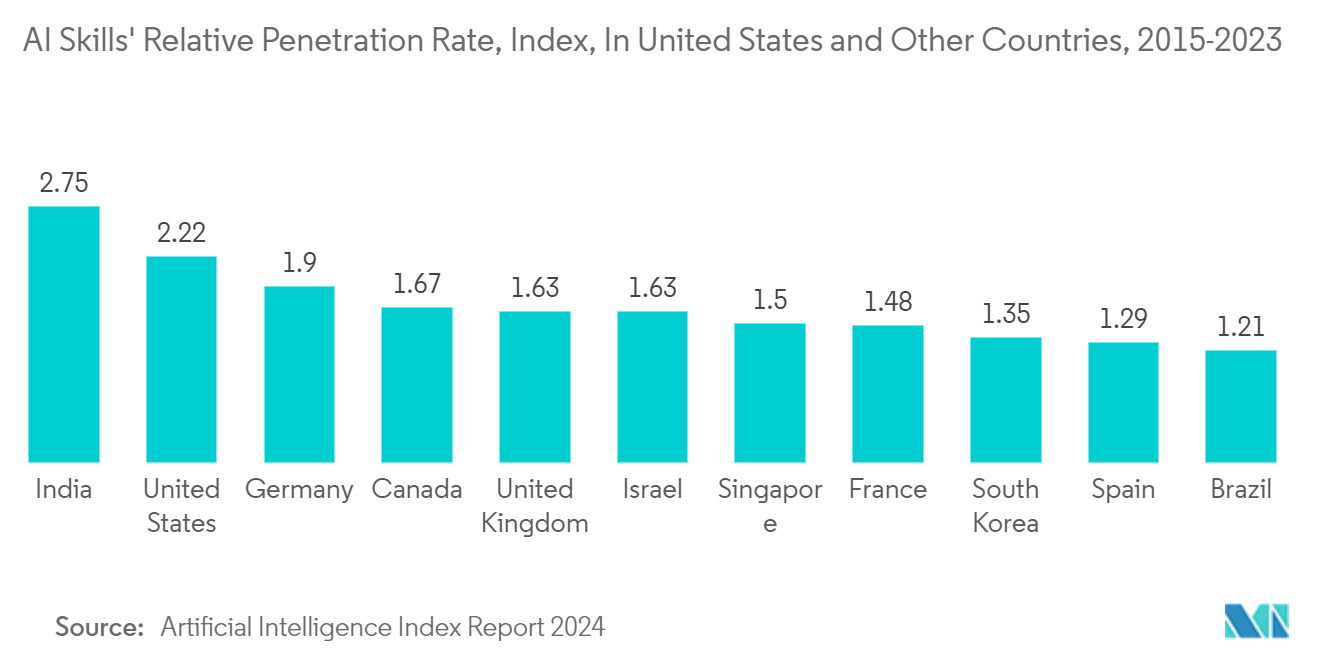Market Trends of US Geospatial Imagery Analytics Industry
Small Satellities will Boost Market Growth
- The increasing demand for small satellites is anticipated to drive the expansion of the geospatial imagery analytics market. The small satellites are usually smaller and weigh less than 100 kg, or the size of a carry-on. These satellites are used in imagery analytics for examining small pieces of data globally with lower cost and more dependable and precise results in minute operations.
- A recent study has shown that the small satellite industry has since 2012 become a rapidly growing industry. Companies such as Terran Orbital are not only developing tens of satellites that can provide geospatial and imagery data, but a growing market is Internet of Things (IoT) satellites. Another recent company is Hiber, which also focuses on IoT satellites. While larger companies had traditionally ruled the market, smaller companies are now being invested in by the larger markets to develop new, innovative satellites that can be quickly launched and sent into different orbit levels.
- Another area of growth is firms purchasing small satellites so they can be used for geospatial consulting that increasingly uses artificial intelligence and machine learning. For instance, companies that monitor the number of cars in parking lots, mining companies interested in forecasting metal resources, or real estate investors and realty firms evaluating the quality of properties are some of the purchasers of these small satellite systems.
- In addition, OneWeb, a UK-based communications company, and Starlink, a US-based satellite internet company, are liable for nearly all of the 1,743 small satellites launched in 2021, accounting for about 95 percent of the entire upmass. Thus, the proliferation in demand for small satellites pushes the growth of the geospatial imagery analytics market.
- According to Federal Aviation Administration and US Department of Transportation, in 2023, 117 commercial space rockets were launched by United States. American companies, the highest number so far in this century. The number of space launches has increased considerably in the last decade fueled by the decrease in launch costs and the emergence of new commercial providers like SpaceX, Blue Origin, and Rocket Lab.
- Small-scale satellites are changing how people can acquire data as geospatial analysts. In many cases, satellite data quality is improving, and costs are likely to drop as creating high-quality imagery at a more affordable price becomes easier. Outside of only imagery, small satellites are transforming IoT by enabling us to better connect with systems worldwide that allow easier monitoring and more data capture and transfer of information, facilitating geospatial research and even investments for firms.

Imagery Analysis and surge in use of AI will drive the market
- Satellite image analysis has been vital for various industries, governments, and researchers worldwide. It provides valuable insights into the Earth's surface urban planning, allowing for better agricultural and disaster management decision-making. With the advent of artificial intelligence (AI) and machine learning, the potential for satellite image analysis has grown exponentially, opening up new opportunities for harnessing this technology.
- One of the most significant advances in satellite image analysis has resulted from AI algorithms adeptly processing vast amounts of data quickly and accurately. These algorithms can analyze images at a much higher resolution than traditional methods, enabling the detection of subtle changes in the Earth's surface that may have formerly gone unnoticed. This increased accuracy is beneficial in applications such as monitoring deforestation, tracking the spread of wildfires, and assessing the impact of natural disasters.
- For instance, in August 2023, IBM and NASA released Prithvi, an open-source foundation AI model that may help scientists and other folks analyze satellite imagery. The vision transformer model, released under an Apache 2 license, is relatively small at 100 million parameters and was trained on a year's worth of images collected by the US space boffins' Harmonized Landsat Sentinel-2 (HLS) program. As well as the primary model, three variants of Prithvi are available, fine-tuned for identifying flooding, wildfire burn scars, crops, and other land use.
- Further, in January 2022, Planet, a leading provider of daily data and insights about Earth, and Google Cloud, Google's suite of cloud computing services, have announced an increase in their partnership and a new agreement under which the two companies will develop joint solutions that combine Planet's high-frequency Earth observation data with Google Cloud's cloud-based infrastructure to help better data-driven decision-making.
- In conclusion, integrating AI in satellite image analysis has opened new possibilities for this technology, allowing more precise and efficient Earth surface analysis. As AI algos become more accessible, satellite image analysis will be increasingly essential in addressing global challenges and informing decision-making across various sectors. By overpowering the remaining challenges and fostering collaboration between stakeholders, the full potential of AI in satellite image analysis can be harnessed for the benefit of society.


